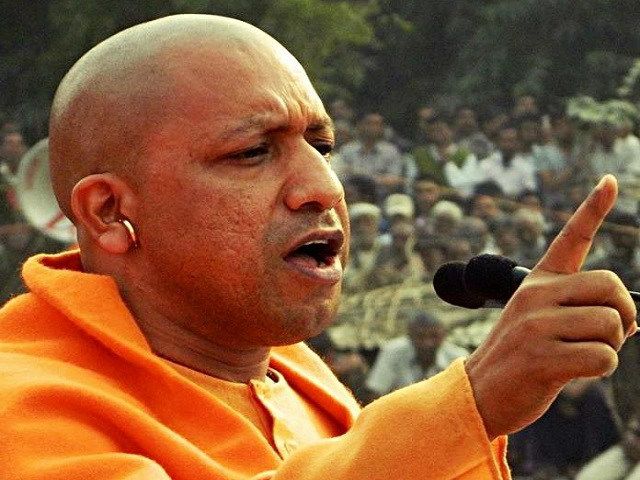
With the appointment of hardline Hindu monk Yogi Adityanath as chief minister of India’s most populous state, Uttar Pradesh (UP), the Indian Peoples’ Party (BJP) government of Prime Minister Narendra Modi has shown what an extremist force can do when freed of the restraints of coalition partners or parliamentary numbers.
The February 11-March 8 legislative assembly elections in UP have involved evidence of voting machine tampering, mid-election polls by a newspaper (prohibited by law) and large-scale involvement of the quasi-fascist National Volunteers Association (RSS) in planning and conducting the BJP campaign.
The party won 312 seats out of 403, while its minor allies won 13 seats with a combined vote of 41.4%. The appointment of Adityanath, federal MP and head of a hardline monastery with a history of hate speech and violence against Muslims, is widely viewed as a result of the RSS calling the shots in the government.
The appointment of Adityanath, who is not even an elected member of the UP assembly, was followed by a spate of violence against Muslims, the forced closure of abattoirs and butcher shops, Saudi Arabian-style policing of men and women in public spaces, and attacks and lynching of Muslims on the pretext of protecting cows.
Two other BJP-ruled states have followed suit with a spate of violent attacks on Muslims under various pretexts.
Meanwhile, the Modi government used its numbers in the Lok Sabha (India’s lower house) to bring in a “money bill”. This makes sweeping changes to laws on political donations by lifting limits on corporate donations, scrapping the need to declare donations, giving sweeping powers of raids and seizure of property to the income tax office and making it mandatory for citizens to obtain a biometric card for most activities, such as booking a ticket or operating a bank account.
While other political parties have fronts, affiliates and wings, the BJP and its predecessor the BJS have operated as the political fronts of the RSS, which has long claimed to be a purely cultural organisation.
The RSS was launched as a Hindu nationalist organisation in 1925 and operates as a paramilitary group, similar to the KKK. Traditionally drawing its membership from the clerical and small trader classes, it has since expanded through numerous groups, including the Vishwa Hindu Parishad (World Hindu Council), Hindu Seva Sangh (working overseas), Bajrang Dal, Vidhya Bharathi and its political arm the BJP.
Modi, most members of his cabinet and other BJP leaders are from the RSS. The government has a coordination committee of cabinet ministers, party leaders and RSS representatives that meets frequently to decide on policy and executive matters.
The RSS is a rigidly centralised group. Each leader is nominated by the outgoing chief. Most RSS policy was developed by its second supreme leader MS Golwalkar in his two major writings, We, or Our Nationhood Defined (1939) and A Bunch of Thoughts (1966).
The parallels between the RSS’s notion of racial purity and a “Hindu nation” and Nazi ideologies can clearly be seen.
We, or Our Nationhood Defined declares: “To keep the purity of its race and culture, Germany shocked the world by her purging the country of the semitic races — the Jews. Race pride at its highest has been manifested here.
“Germany has also shown how well nigh impossible it is for races and cultures, having differences going to the root, to be assimilated into one united whole, a good lesson for us in Hindustan to learn and profit by.”
This view guided the RSS until it formally disowned Our Nationhood Defined in 2005. A Bunch of Thoughts, which continues to inform its policy, identifies the Hindu “race” as owners of the country. Zorastrians and Jews are viewed as “guests”, while Muslims are seen as robbers.
The three enemies of the RSS project of forming a monolithic Hindu nation are listed as Muslims, Christians and Communists.
This vision is implemented under the two-pronged strategy of “development” and “Hindutva”. This translates into further privatisation, de-regulation and suppression of workers’ rights on the one hand, and fanning of anti-Muslim hatred and vigilante violence on the other.
The wealthy middle class further strengthens its political power through its wealth and the religious right is allowed to generate wealth through political power.
That this will inevitably erode even parliamentary democracy is quite clear from the political order being considered within the RSS structures. For instance, economist Subramaniam Swamy, now a BJP MP, revealed the draft policy of the ABVP (the RSS’s student front) in 1998.
The paper proposes replacing India’s two houses of parliament with a three-tier system. At the top, there would be a Guru Sabha (House of Monks) nominated by the president. The president is to be elected by a lower house constituted on an electoral college of teachers.
The rolls of the college would be prepared by the Ministry of Human Resources, not the Electoral Commission. The college would not vote for individual candidates, but for parties under a list system through electronic voting machines.
All legislation would originate from the Guru Sabha and pass down to the lower house. The Sabha would also appoint Supreme Court judges and would have the power to impeach them.
A third chamber, or Raksha Sabha (House of Defence), would consist of serving and retired military officers with powers to declare a state of emergency. The result is something of a cross between a theocracy and a military dictatorship. While this is admittedly a draft project, the final outcome of the RSS project, if it succeeds, will not be far removed from it.